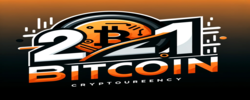Price Chart
Litecoin

Litecoin is an open-source, peer-to-peer Internet currency forked from Bitcoin in 2011. Like Bitcoin, it enables instant, near-zero cost payments to anyone in the world. Litecoin's decentralized network is secured by complex mathematical computation which allows individuals to control their own finances. Compared to Bitcoin, Litecoin features faster transaction confirmation times and improved storage efficiency. It has emerged as the second most popular cryptocurrency, after Bitcoin.
Litecoin has emerged as the second most popular cryptocurrency, after Bitcoin. The Litecoin Network aims to process a block every 2.5 minutes, rather than Bitcoin's 10 minutes. This allows Litecoin to confirm transactions much faster than Bitcoin.
The aggregate value of Litecoin experienced massive growth in November 2013, which included a 100% leap within 24 hours. Litecoin became the first of the top 5 cryptocurrencies In May 2017 to adopt Segregated Witness. Later in May of the same year, the first Lightning Network transaction was completed through Litecoin, transferring 0.00000001 LTC from Zürich to San Francisco in under one second.
Due to use of scrypt as a proof-of-work algorithm in litecoin, it becomes a sequential memory-hard function requiring asymptotically more memory than an algorithm which is not memory-hard. Due to Litecoin's use of the scrypt algorithm, FPGA and ASIC devices made for mining Litecoin are more complicated to create and more expensive to produce than they are for Bitcoin, which uses SHA-256.
From early days litecoin has developed correlation to Bitcoin as a method of payment in terms of extended payment patterns. There was assumption that payment patterns of Litecoin would converge to Bitcoin over time, but there is a little correlation between Litecoin payment patterns with Bitcoin.
